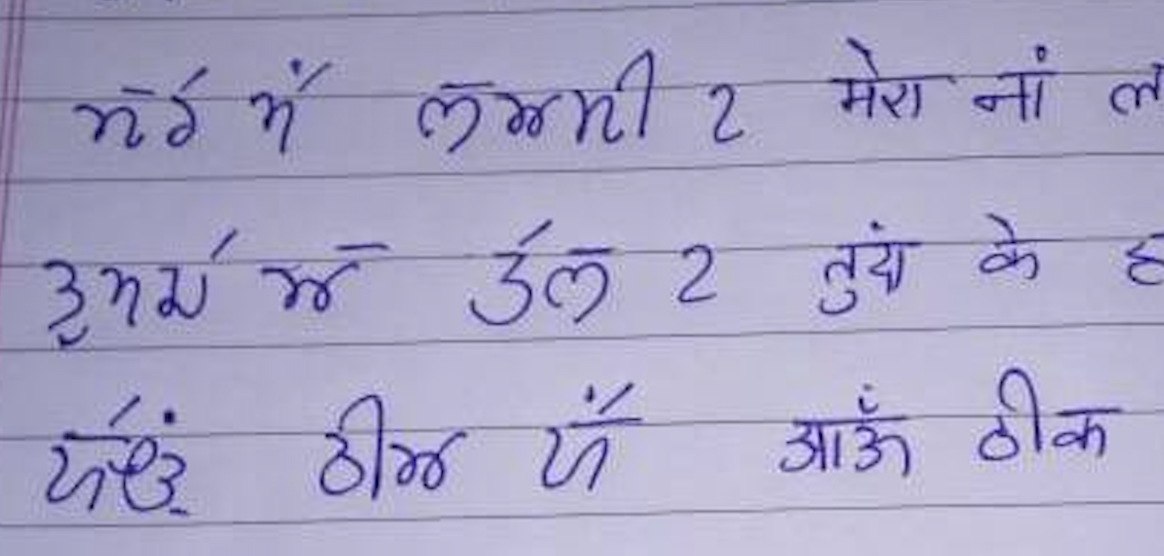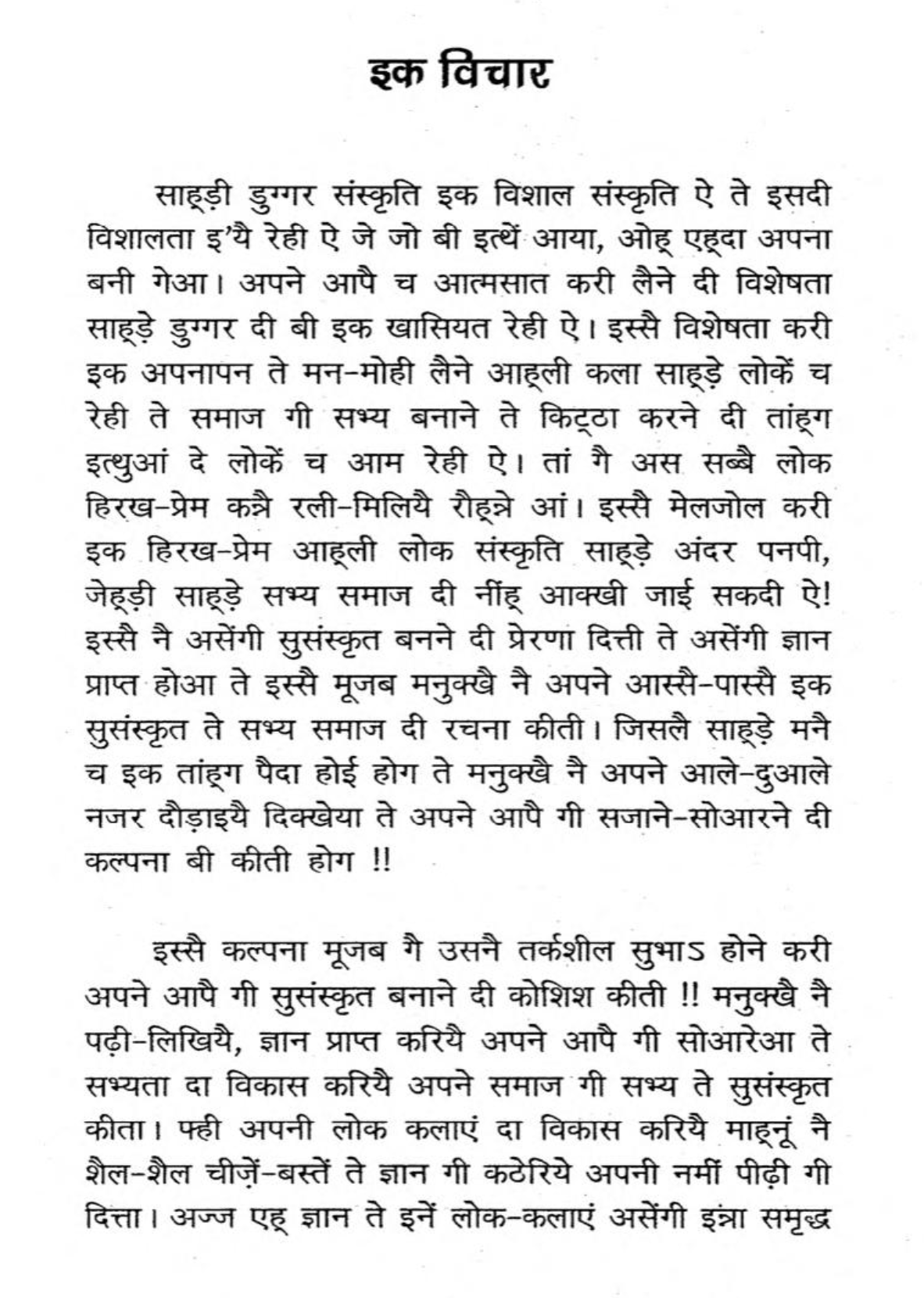Dogri
Dogri is an Indo-Aryan language spoken in India, chiefly in the Jammu region of Jammu and Kashmir. It is also spoken in the state of Himachal Pradesh, and in northern Punjab, other parts of Jammu and Kashmir, and elsewhere. Although formerly treated as a Punjabi dialect, Dogri is now considered to be a member of the Western Pahari group of languages. Unusually for an Indo-European language, Dogri is tonal, a trait it shares with other Western Pahari languages and Punjabi.
Dogri has several varieties, all with greater than 80% lexical similarity (within Jammu and Kashmir). Dogri is one of the 22 official languages of India. It was added in the 8th schedule of the constitution in 2001. Dogri was originally written using the Dogri script. It is now more commonly written in Devanagari in India, and in the Nastaʿliq form of Perso-Arabic in Pakistan and Pakistani-administered Kashmir. The Dogra Script was standardised from Chambeali Takri Script during the Dogra rule.
Number of speakers: 2,596,767 via: Census 2011
ISO 639-3 Language Code: dgo
More Information Online
Omniglot
OLAC
PLS
Glottolog
ScriptSource
Examples
Typeset Text
Universal Declaration of Human Rights: Dogri
(Translation in progress)
Images
Particular forms/combinations
Handwriting Sample
 Full Image via: @khajuriamanu
Full Image via: @khajuriamanu
Typography Sample
 Example of Dogri text
via: Internet Archive
Example of Dogri text
via: Internet Archive
Text Files
Dogri Word Frequency List
via: http://crubadan.org
PDFs
Abhigyan Shakuntalam – Dogri translation
via: Internet Archive
Bharatiya Bhasha Jyoti – Dogri language book
via: Internet Archive
Dogri Dictionary – Dogri language vocabulary
via: Internet Archive
Katha Sarit Sagar – Dogri translation
via: Internet Archive
Marue Diyan Minzaran – Dogri schoolbook
via: Internet Archive
Websites in Dogri
http://bichaar-manthan.blogspot.com
http://ildc.in
http://india4jesus.com
http://www.dogri.org
http://www.gotquestions.org
http://www.jammulinksnews.com
http://www.ntm.org.in
Bibliography / Resources
Ujjal Singh Bahri. 2001. Dogri: Phonology and Grammatical Sketch. (Series in Indian Languages and Linguistics, 24.) New Delhi: Bahri Publications. 88pp.
Gauri Shankar. 1931. A Short Account of Ḍogri Dialect. Indian Linguistics 1. 93-176.
Veena Gupta. 2014. Dogri. In Omkar N. Koul (ed.), The Languages of Jammu and Kashmir, 3-68. New Delhi: Orient Blackswan.
Kamaldeep Kaur and Amitabh Vikram Dwivedi. 2018. Dogri and its Dialects: A Comparative Study of Kandi and Pahari Dogri. (Linguistics Edition, 115.) München: LINCOM. 216pp.
Gosvāmī, Om. 2000. Ḍogrī-hindī śabdakoś. Jammū: J&K Academy of Art, Culture and Languages.
George A. Grierson. 1916. Indo-Aryan Family: Central Group: Specimens of Western Hindī and Pañjābī. (Linguistic Survey of India, IX(I).) Calcutta: Office of the Superintendent of Government Printing. 834pp.
Jeremy D. Brightbill and Scott D. Turner. 2007. A Sociolinguistic Survey of the Dogri Language, Jammu and Kashmir. SIL Electronic Survey Reports. 2007-017. 29pp. SIL Electronic Survey Reports 2007-017. {http://www.sil.org/silesr/abstract.asp?ref=2007-017}
In-Progress/Unresolved Issues
1)
A different tone mark is required to align at headline level, different from an apostrophe. The tone mark represents high falling tone while apostrophe is used as syncopation mark.
2)
Devolved halant forms are needed to distinguish tone and pronunciation.




